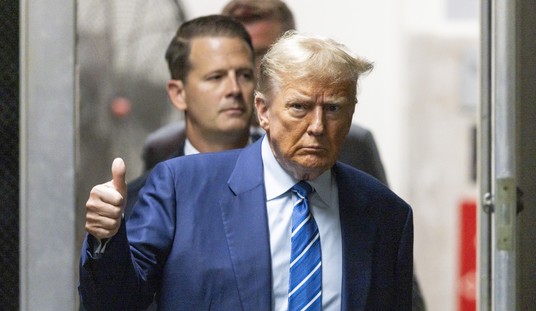 Zheng He was the most important naval explorer you’ve never heard of. In a series of explorations during the early 15th Century, Zheng and his “treasure fleet” traveled the South Pacific, the Indian Ocean, and as far West as the Horn of Africa. Some of his ships – and he had a fleet of them – measured 400 feet from bow to stern. Ships of similar size wouldn’t serve in Western navies for centuries. A eunuch and a Muslim, Zheng served China’s Ming Dynasty with more than a little derring-do.
Zheng He was the most important naval explorer you’ve never heard of. In a series of explorations during the early 15th Century, Zheng and his “treasure fleet” traveled the South Pacific, the Indian Ocean, and as far West as the Horn of Africa. Some of his ships – and he had a fleet of them – measured 400 feet from bow to stern. Ships of similar size wouldn’t serve in Western navies for centuries. A eunuch and a Muslim, Zheng served China’s Ming Dynasty with more than a little derring-do.
So why have most people never heard of Zheng? Because little came of his exploits. After the death of the Yongle Emperor, his successor had the treasure fleet turned to scrap. In fact, the Xuande Emperor even destroyed China’s impressive shipyards. His reign looked inward, not outward.
There’s more to the story. It is believed by some that Zheng took his treasure fleet east, to the west coasts of North and South America – 50 years before Columbus made his first voyage.
I first read about him three or four years ago, in a collection of alternate history essays & stories called What If? 2. Reading about the possibilities of a Chinese Empire in the American West, I got a little excited by the counterfactual scenario and did a lot of reading on Zheng. While I believe he did indeed visit the New World, the evidence isn’t conclusive.
Now the BBC reports a story which, if true, could prove Zheng really did beat Columbus:
A map due to be unveiled in Beijing and London next week may lend weight to a theory a Chinese admiral discovered America before Christopher Columbus.
The map, which shows North and South America, apparently states that it is a 1763 copy of another map made in 1418.
There’s just one little problem. The map is an obvious forgery. The story claims that
Chinese characters written beside the map say it was drawn by Mo Yi Tong and copied from a map made in the 16th year of the Emperor Yongle, or 1418.
However, there’s no way that the map shown could have been drawn in 1418. Take a look:

What’s wrong here? Two very big things.
First, not even Zheng’s biggest boosters claim that he traveled as far south as Australia, clearly shown on the map. There is some slim chance that in his travels, Zheng talked to locals who told him of some island to the southeast. If so, such “port talk” would explain why Australia appears on the map at all. It would even explain why it appears with far less accurate scale and position than India or Somalia. However, all of this is mere speculation.
The other big problem can’t be explained away.
Sure, there’s compelling evidence that Zheng saw California and Peru. But did he see Brazil or Georgia? Impossible. And yet you can see the entire East Coast of both American continents, and in quite some detail, too. Furthermore, California is shown as an island, just like it appears on European maps from the 17th Century.
In order to take this map as the real thing, you’d have to believe that Zheng didn’t just discover the New World before Columbus, but that he voyaged into Hudson Bay two centuries before Henry Hudson.
It’s obvious – even to an amateur like myself – that somebody has been fooled, and badly. The map shown by the BBC simply has to be an amalgamation of European and Chinese knowledge, cobbled together sometime in the 16th or 17th centuries.
Nothing surprising there, really. People get taken in all the time by “too good to be true” historical finds. What is surprising is that the BBC – with all of its vaunted institutional knowledge – couldn’t spot a hoax as quickly as an amateur sitting in his basement with a baby on his lap.
I still think that Zheng almost certainly visited the New World decades before Columbus. The BBC, on the other hand, doesn’t know what to think.









Join the conversation as a VIP Member